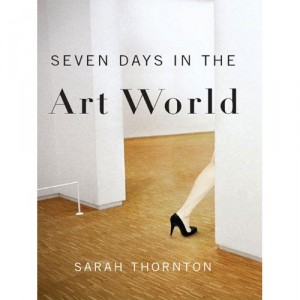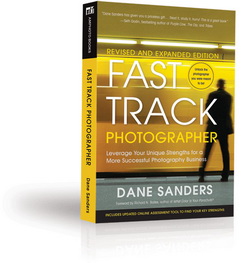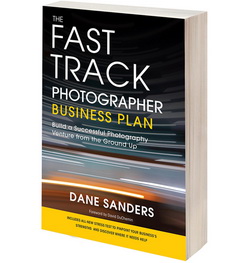WRITERS. Suppose you have a great idea for a nonfiction book. Which approach is a better use of your time: Should you develop a detailed book proposal, pitch it to an agent or publisher, and wait two years for the book to hit the shelves? Or should you self-publish the book first and start selling it while most of the information is still current?
 If self-publishing sounds like too much work or you’re not sure where to begin, I recommend reading both volumes of Dan Poynter’s Self-Publishing Manual. Then you’ll understand why the stigma once associated with self-publishing has vanished. You’ll also see why the brave, new world of ‘trans-media’ is rapidly changing the very definition of a ‘book.’
If self-publishing sounds like too much work or you’re not sure where to begin, I recommend reading both volumes of Dan Poynter’s Self-Publishing Manual. Then you’ll understand why the stigma once associated with self-publishing has vanished. You’ll also see why the brave, new world of ‘trans-media’ is rapidly changing the very definition of a ‘book.’
If you’re a writer, self-publishing is a great way to control every phase of your book’s production. Plus, the more you know about self-publishing, the better prepared you will be to help others who may hire you to ghost-write or edit their books.
Poynter believes emerging technologies are rapidly making it possible for authors to get closer to their readers while also selling books for less. You can still profit from your investment in self-publishing, says Poynter, because you will be eliminating the amount of income paid to agents, publishers, wholesalers, bookstores, distributors, and other gatekeepers in the middle.
Dan Poynter’s Self-Publishing Manual (463 pages) covers the basics of writing, printing, and selling your own book and lets you see how the steps involved in self-publishing differ from those associated with traditional publishing. In addition to tips on book design and formatting, Poynter provides practical advice on selecting a book printer, deciding how many books to print, and estimating sales. He devotes entire chapters to marketing and distribution channels and shipping and fulfillment considerations.
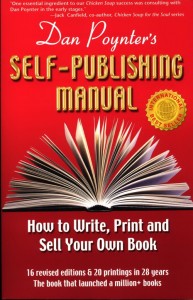 Dan Poynter’s Self-Publishing Manual, Volume 2 (144 pages) explains how to take advantage of some of the technological changes that are rapidly transforming the book-publishing business. For example, Poynter suggests building your print version (pbook) first, then converting that content into other forms your audience might like, including: e-books, audio books (a-books), and large-print books (lpbooks).
Dan Poynter’s Self-Publishing Manual, Volume 2 (144 pages) explains how to take advantage of some of the technological changes that are rapidly transforming the book-publishing business. For example, Poynter suggests building your print version (pbook) first, then converting that content into other forms your audience might like, including: e-books, audio books (a-books), and large-print books (lpbooks).
As Poynter explains, “We call them ‘books,’ but that term is generic; ‘books’ can take many forms. Do not think of your product as a print product—think of it as entertainment or information. Then focus on providing the formats (or editions) the buyer wants and needs.”
To streamline the self-publishing process, he advises writing the back-cover promotional copy first so you can clarify in your mind why readers might be interested in the type of content you’re developing. (In other words, instead of figuring out how to pitch your idea to an agent or publisher, first spend some time deciding how you will pitch your book directly to the potential buyer.)
He also explains how to typeset the book in formatted pages as you write it, instead of writing it in the traditional manuscript form required by conventional publishers. You will still need to have the book peer-reviewed, copy-edited, and proofread. But if the book is already formatted in pages, you can save some valuable time.
In Volume 2, Poynter talks about how to use social media and social networking to gather information for your writing and alerting people who may be interested in buying your book. He also talks about new technology that let you publish it for less, new ways to distribute your book more economically, and how to have fun promoting it.
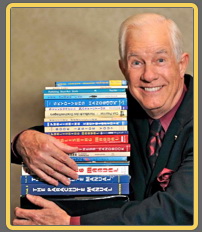 Dan Poynter says it took him eight years to produce his first book (on parachuting). Since then he has written more than 125 books, primarily by developing a highly organized system for researching, research, writing, and editing. In some cases, the pages for his books have been written, laid out, and delivered to the printer within 30 days.
Dan Poynter says it took him eight years to produce his first book (on parachuting). Since then he has written more than 125 books, primarily by developing a highly organized system for researching, research, writing, and editing. In some cases, the pages for his books have been written, laid out, and delivered to the printer within 30 days.
Having been in the business since 1969, he knows the ins and outs of the business from all angles. He has published books for other authors and sold some of his own books to publishing companies.
You Don’t Have to Do It All Yourself!
If you don’t have the time or confidence to handle all of the steps involved in self-publishing yourself, there are plenty of sources who can help you. For example, the self-publishing manual lists specialized service providers such as bar code suppliers, book clubs, book fair exhibiting services, book designers and cover artists. Poynter also lists “book shepherds,” a new group of consultants who will take your book project through all of the necessary steps.
One of the most useful features of the book is a Calendar, with a checklist of some of the administrative and promotion-related items you should be tackling during different stages of writing and producing the book.
Self-publishing can indeed be a lot of work, and recouping your investment of time and money will require a commitment to promoting it. But unless you have already established a strong business relationship with an existing publishing company, self-publishing and selling your first book may soon be regarded as an essential first step.
The Future of Books
Poynter believes the publishing business is changing so rapidly that in the near future, the publication cycle will be reversed and books will first be posted online, then committed to ink and paper if there is sufficient interest.
In Volume 2, he writes, “We will always have printed books, but they will be fiction, coffeetable books (works of art), and nonfiction that is so popular that it has earned a print run.”
Both books are available from bookstores. Or you can buy them directly from Dan’s website, Para Publishing. The website features dozens of other tips and resources for writers and anyone who wants to publish their own books.
LINKS
Dan Poynter’s Self-Publishing Manual: How to Write, Print, and Sell Your Own Book
Dan Poynter’s Self-Publishing Manual, Vol. 2
Para Publishing
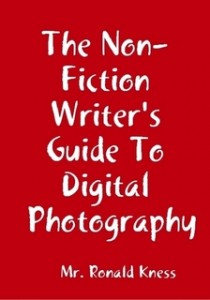 WRITERS. ARTISTS. DESIGNERS. According to photojournalist/author Ronald Kness, non-fiction writers can earn more money when they submit photos along with their text. That’s why he wrote an e-book entitled “The Non-Fiction Writer’s Guide to Digital Photography.” But knowing the basics of taking good photographs could be equally beneficial to artists who are documenting their everday work or exhibitions or designers who are creating promotional materials.
WRITERS. ARTISTS. DESIGNERS. According to photojournalist/author Ronald Kness, non-fiction writers can earn more money when they submit photos along with their text. That’s why he wrote an e-book entitled “The Non-Fiction Writer’s Guide to Digital Photography.” But knowing the basics of taking good photographs could be equally beneficial to artists who are documenting their everday work or exhibitions or designers who are creating promotional materials.



